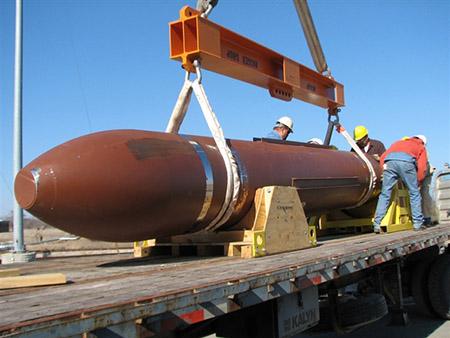It is an improvement on the bunker-buster bomb, which was already capable of destroying underground constructions. Now, it has developed the ability to deactivate the most heavily fortified nuclear facilities in Iran and, in parallel, electronic counter measures have also been developed to prevent opponents from intercepting the bomb driving device.
The bunker buster was dropped from a B-2 bomber, which took off from the Whiteman Air Force Base in Missouri, at the White Sands polygon in New Mexico.
To improve the destructive potential, we hypothesize the simultaneous launch of two bombs on the same point of impact, this should allow greater accuracy to the target and the certainty of destroying it or otherwise causing damage such as to prevent its use.
According to Pentagon estimates, the simultaneity of two bombs launched together would guarantee an effect not comparable to any conventional weapon. Furthermore, the combination with the anti-jamming improvements would allow an accuracy at the target up to now only with an attack carried by a much higher number of devices.
A US intelligence report, reports that the military option against Iranian nuclear facilities would still not be decisive, at most it would delay its implementation by a couple of years. The more accurate reading of the document would imply the need to evade human technical capacity rather than hardware.
US technicians have shared details of the weapon system with their Israeli counterparts, but the Jewish State will not be equipped with the new bunker-buster. In particular, they were shown a video in which it is possible to deduce the capabilities of the bomb.
The development of such a weapon, called Penetrator Ordnance Massive, represents a sort of dissuasion to Iran, where the talks and in particular the specifications on the preliminary agreement, are not satisfactory for the US Administration.
The addition of the MOP to potential threats to Iranian nuclear sites, but also to those in North Korea, reveals the continuation of the US military option, which evidently hypothesizes the possible failure of diplomacy, committed in Switzerland, in an attempt to regulate development of the Islamic Republic, and also to make the framework agreement reached so far and applicable by 30 June 2015 credible.
At the same time, however, Western sanctions against Iran remain.
Giovanni Caprara

(photo: US DoD)












